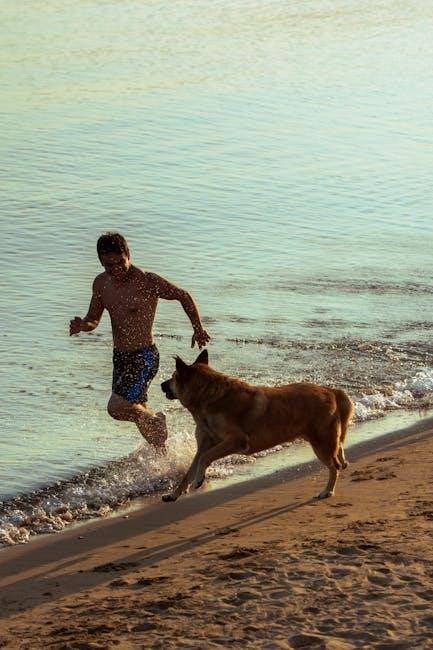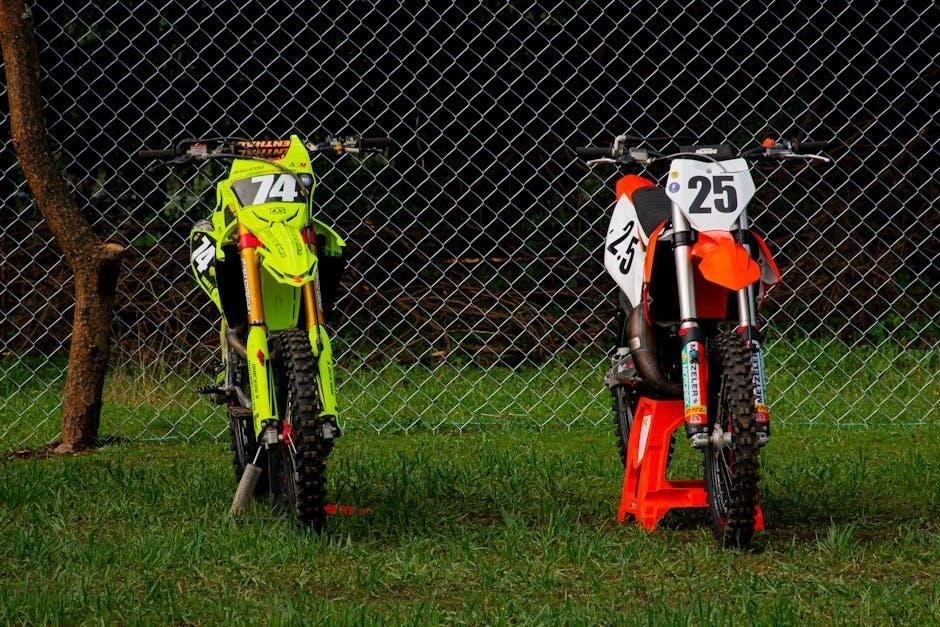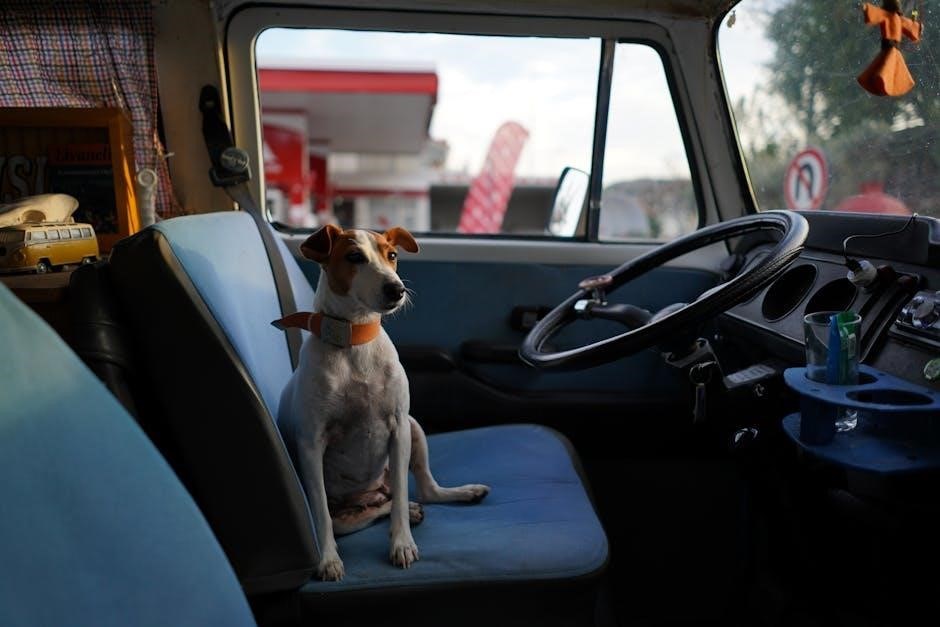The Wheeling Dog Track Program is a structured initiative designed to promote physical and emotional well-being for dogs through guided exercises and activities. It emphasizes health benefits, structured training, and community engagement, fostering a supportive environment for canine development.
What is the Wheeling Dog Track Program?
The Wheeling Dog Track Program is a structured initiative designed to provide dogs with physical exercise, mental stimulation, and social interaction. It typically involves guided activities such as running, walking, and playtime on designated tracks or trails. The program is tailored to meet the unique needs of dogs, ensuring their overall well-being and happiness.
At its core, the program focuses on creating a safe and engaging environment where dogs can thrive. It often includes training sessions, behavior modification techniques, and bonding exercises between dogs and their owners. The program is versatile, catering to dogs of various breeds, sizes, and energy levels.
By incorporating a mix of physical activity and mental challenges, the Wheeling Dog Track Program helps improve a dog’s agility, endurance, and emotional stability. It also serves as a platform for dog owners to connect, share experiences, and learn effective caregiving strategies. The program is widely recognized for its holistic approach to canine health and development.
Importance and Purpose of the Program
The Wheeling Dog Track Program holds significant importance as it addresses the physical, emotional, and social needs of dogs. Its primary purpose is to ensure dogs lead healthy, balanced lives through structured activities.
By providing regular exercise and mental stimulation, the program helps prevent health issues like obesity and behavioral problems. It also fosters strong bonds between dogs and their owners, promoting trust and understanding.
The program’s design encourages social interaction among dogs, reducing anxiety and aggression. It creates a supportive environment where dogs can thrive, helping them become well-adjusted companions. Overall, the Wheeling Dog Track Program is a vital initiative for enhancing canine well-being and strengthening the human-dog relationship.

Historical Background of the Program
The Wheeling Dog Track Program originated as a community-led initiative in 2018, inspired by local animal tracking efforts. It evolved over years, officially launching in 2024, combining exercise, training, and social interaction for dogs, enhancing their well-being.
Development and Origins
The Wheeling Dog Track Program was first conceptualized in 2018 by a group of animal enthusiasts in Wheeling, West Virginia. The idea emerged from a growing concern about the sedentary lifestyles of many household dogs, which were leading to health issues such as obesity and behavioral problems. Initially, the program was informal, with local dog owners organizing casual meetups at community parks to encourage physical activity for their pets; Over time, the initiative gained traction, and by 2020, it had evolved into a structured program with clear objectives and methodologies.
The program’s early development involved collaboration with local animal trainers, veterinarians, and behavioral experts. These professionals contributed to the creation of a comprehensive framework that combined physical exercise with mental stimulation. The core idea was to provide a safe, engaging environment where dogs could thrive physically and emotionally. By 2023, the program had expanded to include specialized training modules and assessment tools to monitor progress. Today, it is recognized as a model for innovative canine wellness initiatives, emphasizing community involvement and holistic development for dogs of all breeds and sizes.
Evolution Over the Years
The Wheeling Dog Track Program has undergone significant evolution since its inception. Initially focused on basic physical activities, the program expanded to incorporate advanced training techniques, emotional enrichment, and community engagement. By 2021, it had introduced specialized modules for dogs with specific needs, such as agility training for high-energy breeds and calmness exercises for anxious dogs.
In 2022, the program adopted digital tracking tools to monitor dogs’ progress, allowing owners and trainers to set personalized goals. This innovation enhanced accountability and transparency, making the program more structured and effective. Additionally, partnerships with local veterinarians and pet behaviorists were established, ensuring that the program aligned with the latest scientific research and best practices in canine care.
By 2023, the program had grown beyond Wheeling, with similar initiatives being adopted in neighboring towns. The introduction of seasonal events, such as dog festivals and charity runs, further solidified its role in the community. Today, the Wheeling Dog Track Program is a testament to the power of collaborative innovation in improving the lives of dogs and their owners.

Program Structure and Components
The Wheeling Dog Track Program is structured around core training modules, community engagement activities, and health assessments. It includes regular exercise routines, obedience training, and socialization sessions, ensuring a holistic approach to canine development.
Additional components like nutrition advice and mental stimulation exercises are integrated to enhance overall well-being, making it a comprehensive program for dogs of all ages and breeds.
Core Components of the Program
The Wheeling Dog Track Program revolves around essential components tailored to ensure comprehensive development for dogs. These include:
- Physical Training: Structured exercises like walking, running, and agility drills to enhance stamina and mobility.
- Obedience Sessions: Training focused on commands and behavior management to improve responsiveness and discipline.
- Socialization Activities: Group interactions to foster positive behavior in diverse environments and with other animals.
- Nutritional Guidance: Advice on balanced diets to support energy levels and overall health.
- Mental Stimulation: Interactive games and puzzles to challenge cognitive abilities and reduce stress.
These core elements are designed to create a well-rounded experience, addressing both physical and mental needs, ensuring optimal outcomes for participating dogs.
Training Methods and Techniques
The Wheeling Dog Track Program employs a variety of training methods and techniques to ensure effective and engaging development for dogs. These include:
- Positive Reinforcement: Reward-based training using treats, praise, and affection to encourage desired behaviors.
- Structured Exercise Routines: Tailored walking, running, and playtime schedules to improve physical fitness and stamina.
- Agility Drills: Obstacle courses and interactive activities to enhance coordination and agility.
- Obedience Commands: Teaching essential commands like “sit,” “stay,” and “heel” to improve responsiveness and focus.
- Socialization Sessions: Group interactions to help dogs adapt to new environments and other animals.
- Mental Stimulation: Puzzle toys and problem-solving exercises to challenge cognitive abilities and reduce boredom.
These techniques are designed to create a balanced and enjoyable experience, fostering physical, emotional, and social growth in dogs while strengthening their bond with trainers and owners.

Health Benefits for Dogs
Physical health improvements through structured exercises, enhancing cardiovascular health and muscle tone. Emotional well-being is supported through mental stimulation, reducing anxiety and stress, and promoting a balanced, healthy lifestyle for dogs.
Physical Health Improvements
The Wheeling Dog Track Program significantly enhances a dog’s physical health through structured exercises and activities. Regular participation improves cardiovascular health, strengthening the heart and increasing endurance. The program also focuses on muscle tone development, ensuring dogs maintain strong, agile bodies. By incorporating varied physical challenges, it boosts mobility and flexibility, reducing the risk of injuries. Additionally, the program helps prevent obesity by burning excess calories and promoting a balanced weight. Improved joint health is another benefit, as consistent, moderate exercise strengthens connective tissues. Overall, the program ensures dogs achieve optimal physical fitness, contributing to a healthier, more active lifestyle. The combination of tailored exercises and expert guidance makes it an effective way to enhance a dog’s overall well-being and longevity.
Emotional and Behavioral Benefits
The Wheeling Dog Track Program offers numerous emotional and behavioral benefits for dogs. By engaging in structured activities, dogs develop improved socialization skills, reducing anxiety in new environments. The program fosters confidence through positive reinforcement, helping shy or timid dogs become more assertive. Regular interaction with trainers and other dogs enhances emotional stability, reducing fear-based behaviors. The structured routine provides mental stimulation, preventing boredom and destructive habits. Dogs learn obedience and focus, improving their ability to respond to commands calmly. Over time, participants show reduced aggression and hyperactivity, fostering a more balanced temperament. The program also strengthens the bond between dogs and their handlers, creating trust and mutual understanding; Emotional well-being is further supported through consistent positive experiences, helping dogs feel secure and valued. Overall, the program promotes emotional resilience and behavioral harmony, making it an invaluable resource for canine development and owner satisfaction.

Implementation Strategy
The Wheeling Dog Track Program’s implementation strategy involves a structured approach to rolling out the initiative. It includes training sessions, community engagement, and collaboration with certified trainers to ensure effective execution and participation.
Getting Started with the Program
Getting started with the Wheeling Dog Track Program is a straightforward and systematic process designed to ensure a smooth transition for both dogs and their owners. The program begins with an initial assessment to evaluate the dog’s current fitness level, behavior, and any specific needs or limitations. This step is crucial for creating a personalized plan that suits the dog’s unique requirements. Owners are then guided through an orientation session, where they learn about the program’s structure, safety protocols, and expected outcomes. The next step involves enrolling in the program, which includes registering the dog and obtaining any necessary equipment, such as harnesses or tracking devices. Once enrolled, participants are introduced to the training environment, where they meet the coaching team and familiarize themselves with the track and its facilities. The first few sessions are designed to acclimate the dog to the new setting, with a focus on building confidence and establishing a routine. Owners are also provided with resources, including a training manual and access to online support, to help them prepare for the journey ahead. By following these initial steps, participants can ensure a successful and enjoyable experience for both themselves and their dogs.
Role of Coaches and Trainers

The role of coaches and trainers in the Wheeling Dog Track Program is pivotal to ensuring the success and safety of both dogs and their owners. These professionals are responsible for designing and implementing personalized training plans tailored to each dog’s abilities, needs, and goals. Coaches provide expert guidance on proper techniques, monitor progress, and adjust routines as necessary to optimize results. They also play a crucial role in maintaining a safe and supportive environment, ensuring that all activities are conducted with the dog’s well-being in mind. Trainers work closely with owners to educate them on effective communication strategies, helping them build stronger bonds with their dogs. Additionally, coaches and trainers are tasked with motivating participants, addressing challenges, and celebrating milestones. Their expertise and dedication are essential for fostering a positive and productive experience within the program. By combining knowledge, patience, and passion, coaches and trainers help dogs reach their full potential while enriching the lives of their human companions.
Monitoring and Evaluation
The Wheeling Dog Track Program employs assessment tools and metrics to monitor progress, ensuring dogs meet health and performance goals. Regular evaluations allow for necessary adjustments, optimizing the program’s effectiveness and success for participants.
Assessment Tools and Metrics
The Wheeling Dog Track Program utilizes a variety of assessment tools and metrics to evaluate the progress and well-being of participating dogs. These tools include standardized evaluation forms, physical performance tracking, and behavioral observation checklists. Trainers and program coordinators use these metrics to monitor improvements in physical health, such as increased stamina and agility, as well as emotional and behavioral development, like reduced anxiety or improved social interactions. Key metrics also involve owner feedback and veterinary assessments to ensure comprehensive evaluation. The program employs a combination of quantitative data, such as distance covered and speed achieved, and qualitative observations, such as mood and responsiveness. These tools help identify areas for improvement and ensure the program meets its goals effectively. Regular progress reports are generated, providing insights into individual and group performance. By leveraging these assessment methods, the program ensures a holistic approach to canine development and well-being.
Tracking Progress and Development
Tracking progress and development is a cornerstone of the Wheeling Dog Track Program, ensuring that each dog’s journey is monitored and optimized. The program employs a systematic approach to record and analyze each dog’s advancements, whether physical, emotional, or behavioral. Regular assessments are conducted to measure improvements in agility, endurance, and responsiveness to commands. Progress is documented using detailed logs and performance metrics, allowing trainers and owners to identify areas of strength and those needing further attention.
Key milestones, such as completing specific exercises or demonstrating improved social interactions, are celebrated to reinforce positive behaviors. Adjustments to training routines are made based on observed progress, ensuring a tailored approach for each participant. This continuous monitoring not only enhances the effectiveness of the program but also fosters a deeper understanding of each dog’s unique needs and capabilities.
By maintaining a focus on incremental growth, the Wheeling Dog Track Program ensures that every dog reaches its full potential, creating a fulfilling and enriching experience for both the dogs and their owners.

Case Studies and Success Stories
The Wheeling Dog Track Program has inspired numerous success stories, showcasing dogs achieving remarkable progress in agility, behavior, and emotional well-being. Real-life examples highlight how the program fosters transformative experiences, creating a lasting impact on both dogs and their owners.
Real-Life Examples of Success
The Wheeling Dog Track Program has yielded inspiring results, with numerous dogs showcasing significant improvements in agility, emotional stability, and overall well-being. One notable case involves a rescue dog named Max, who struggled with anxiety and socialization issues. After participating in the program, Max demonstrated remarkable progress, becoming more confident and calm in public settings. His owner reported a stronger bond and improved communication, highlighting the program’s impact on both dogs and their human companions.
Another success story features a senior dog named Luna, who experienced mobility issues due to age. Through the program’s tailored exercises and activities, Luna regained strength and agility, allowing her to enjoy outdoor activities with renewed vitality. These real-life examples underscore the program’s effectiveness in transforming lives, fostering healthier and happier dogs within the community.
Lessons Learned and Best Practices
The Wheeling Dog Track Program has provided valuable insights into effective canine training and community engagement. One key lesson is the importance of adaptability, as each dog’s needs and abilities vary. Trainers should tailor exercises to suit individual dogs, ensuring a safe and enjoyable experience. Consistency in training schedules and positive reinforcement techniques has proven crucial for building trust and encouraging progress.
Another critical aspect is the role of owner involvement. Active participation from dog owners strengthens the bond between dogs and their handlers, leading to better outcomes. Additionally, gradual progression in exercise intensity helps prevent injuries and keeps dogs motivated. The program also emphasizes the value of community support, with group sessions fostering camaraderie and shared learning among participants.
- Adapt training methods to individual dog needs.
- Use positive reinforcement to build trust.
- Encourage owner participation for stronger bonds.
- Progress exercises gradually to avoid injury.
- Leverage community support for shared success.

Challenges and Solutions
The program faces challenges like inconsistent training schedules and safety concerns. Solutions include implementing standardized protocols, increasing awareness, and providing consistent support to ensure smooth operations and participant well-being.
- Standardize training protocols for consistency.
- Enhance safety measures to prevent injuries.
- Improve communication to address participant concerns.
Common Challenges Faced
The Wheeling Dog Track Program encounters several challenges that impact its effectiveness and participant engagement. One major issue is inconsistent training schedules, which can disrupt a dog’s routine and progress. Additionally, safety concerns arise, particularly during high-energy activities, requiring constant supervision. Weather conditions also pose challenges, as extreme temperatures or rain can hinder outdoor sessions. Another challenge is participant turnover, as some owners struggle to commit to the program’s demands. Communication gaps between trainers and owners can lead to misunderstandings about expectations and goals. Limited resources, such as training equipment and experienced staff, further complicate program execution. Lastly, varying skill levels among dogs and owners create a need for tailored approaches, which can be resource-intensive. These challenges highlight the need for adaptive strategies to ensure the program’s success and sustainability.
Strategies for Overcoming Obstacles

To address the challenges faced by the Wheeling Dog Track Program, several strategies can be implemented. Flexible training schedules and weather-contingency plans help maintain consistency while adapting to external factors. Safety protocols, such as mandatory warm-ups and supervision, reduce injury risks. Improving communication between trainers and owners through regular updates and feedback sessions ensures alignment on goals and expectations. Offering incentives for consistent participation can reduce turnover rates. Tailored training plans cater to diverse skill levels, ensuring each dog and owner progresses effectively. Investing in quality equipment and staff training enhances program resources. Building a strong community network fosters support and motivation among participants. By addressing these obstacles proactively, the program can enhance its effectiveness, ensuring a positive experience for all involved while achieving its mission of promoting canine well-being.

Future Directions and Innovations
The Wheeling Dog Track Program is poised for growth and innovation, with plans to expand its reach and enhance its offerings. Future initiatives include integrating advanced training technologies, such as wearable devices and AI-driven analytics, to monitor and improve dog performance. Expanding the program to cater to a wider range of dog breeds and sizes is also a priority, ensuring inclusivity and accessibility for all participants. Additionally, the program aims to introduce specialized training modules, such as agility courses and scent work, to diversify the skills dogs can develop. Collaborations with animal behaviorists and universities are being explored to incorporate the latest research into training methods. Sustainability efforts, such as eco-friendly track designs, are also on the horizon. By leveraging these innovations, the Wheeling Dog Track Program will continue to set new standards in canine training and wellness, ensuring it remains a leader in the field for years to come.

